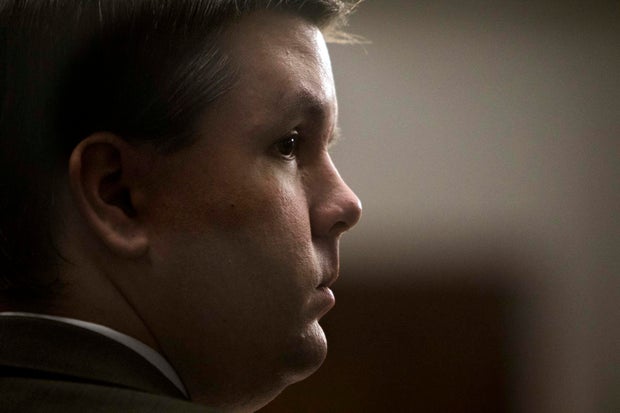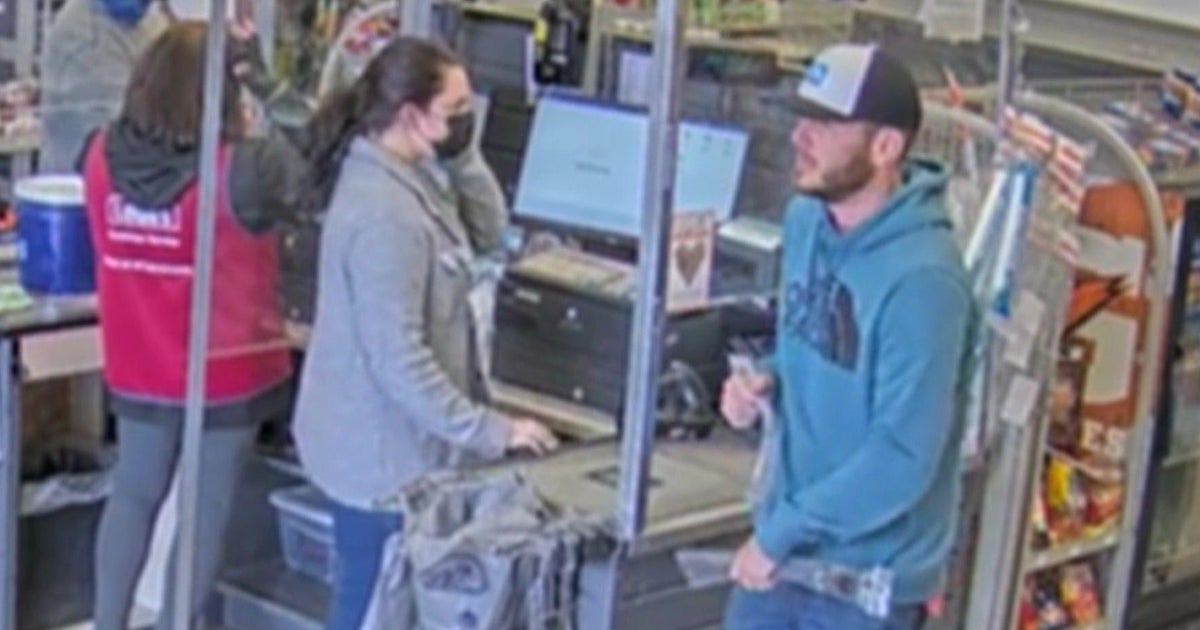CBS News
Georgia father once accused of murder is freed from prison 10 years after toddler died in hot car

A father from Georgia has been released from prison 10 years after his toddler died in a hot car, a case that made global headlines after prosecutors accused him of murder.
Justin Ross Harris was freed on Sunday – Father’s Day – from the Macon State Prison, Georgia Department of Corrections records show. He began serving his sentence on Dec. 6, 2016.
Harris had moved from Tuscaloosa, Alabama, to the Atlanta area for work in 2012. He told police that on the morning of June 18, 2014, he forgot to drop off his 22-month-old son Cooper at day care. Instead, he drove straight to his job as a web developer for The Home Depot and left the child in his car seat, he told investigators.
Cooper died after sitting for about seven hours in the back seat of the Hyundai Tucson SUV outside his father’s office in suburban Atlanta, where temperatures that day reached at least into the high 80s.
Stephen B. Morton, AP
At trial, prosecutors put forth a theory that Harris was miserable in his marriage and killed his son so he could be free. They presented evidence of his extramarital sexual activities, including exchanging sexually explicit messages and graphic photos with women and girls and meeting some of them for sex.
Harris was found guilty in November 2016 on eight counts including malice murder. A judge sentenced him to life without parole, as well as 32 more years in prison for other crimes.
But the Georgia Supreme Court voted 6-3 to overturn his murder and child cruelty convictions in June 2022, saying the jury saw evidence that was “extremely and unfairly prejudicial.”
Prosecutors said at the time that he would not face another trial over Cooper’s death. The Cobb County district attorney’s office, which prosecuted the case, said in a statement that it disagreed with the majority’s decision. But because of that ruling, prosecutors said crucial evidence about Harris’ motive was no longer available for them to use.
Harris’ lawyers have always maintained that he was a loving father and that the boy’s death was a tragic accident.
Though it dismissed the murder conviction, the state Supreme Court upheld Harris’ convictions on three sex crimes committed against a 16-year-old girl that Harris had not appealed. He continued serving time on those crimes until Sunday, when he was released from prison.
Harris’ case drew an extraordinary amount of attention, making headlines around the world and sparking debates online and on cable news shows. After determining that pretrial publicity had made it too hard to find a fair jury in Cobb County in suburban Atlanta, the presiding judge agreed to relocate the trial to Brunswick on the Georgia coast.
According to data from advocacy group Kids and Car Safety, on average, 38 children die each year from heatstroke inside a vehicle. Over the last three decades, more than 1,000 children have died in these incidents.
A recent CBS News data analysis shows 83% of all hot car deaths over the last six years happened between May and September — at least one death each week during the sweltering summer season. It’s not just happening in states with the warmest temperatures. The breakdown reveals a hot car death reported in nearly every state.

CBS News
1 killed, 9 injured in shooting, fiery crash in Baltimore suburb of Towson, police say

BALTIMORE — One person was killed and nine others injured in a shooting and fiery crash in the Baltimore suburb of Towson Tuesday night, authorities said.
Law enforcement responded at around 7:15 p.m. in the 8500 block of Loch Raven Boulevard, Baltimore County Police Chief Robert McCullough said in a news briefing.
“It appears to be a mass shooting incident,” McCullough told reporters. “We have multiple persons who were shot. Right now, we are determining the circumstances and the conditions in this case.”
The first arriving officer found a vehicle on its side in flames near a funeral home, McCullough said, and then several gunshot victims were found in the area.
“There appears to be some type of incident that led to the vehicle crashing and catching on fire,” McCollough said. “Investigators are looking into the circumstances leading up to that.”
The name of the person killed and the manner of death was not released, nor were the conditions of the nine people injured. McCollough did not specify how many of the nine people injured were gunshot victims.
At this time, investigators believe this was an isolated and targeted incident, with no further threat to the community, he added. It’s unclear if any suspects have been arrested. There was no word on a possible motive.
“We will leave no stone unturned and we will dedicate every resource to this,” McCullough said. “We don’t generally see incidents like this in our community in Baltimore County. I assure you as your police chief that we will put all resources toward trying to clear this case.”
The Bureau of Alcohol, Tobacco, Firearms and Explosives was at the scene assisting police, as was the Baltimore County Fire Department.
“This is an incident that is shocking, particularly for those of us in Baltimore County,” said Baltimore County Executive Johnny Olszewski. “These types of incidents are unheard of here, so it really shocks the conscience. However, we want our residents to know that we are, as always, fully committed to ensuring that both our fire and police departments have the full support and all the resources they need from the Baltimore County government to ensure that they bring this investigation to a conclusion.”
Anyone with information is asked to call Baltimore County Police at 410-887-4636.
CBS News
Trump taps Herschel Walker for ambassador to the Bahamas

President-elect Donald Trump announced he will nominate Herschel Walker, the former football player whose 2022 Senate run was plagued by controversy, to serve as U.S. ambassador to the Bahamas.
“Herschel has spent decades serving as an Ambassador to our Nation’s youth, our men and women in the Military, and athletes at home and abroad,” Trump said on social media Tuesday night.
Walker would need to be confirmed by the Senate to assume the role. The Senate has not confirmed a U.S. ambassador to the Bahamas in over a decade. Former President Barack Obama had nominated Cassandra Butts for the role in 2014, but the Senate never even brought her nomination up for a vote, according to The Associated Press. She died in 2016.
Trump in his first term nominated Doug Manchester in 2017 for the ambassador role, but his nomination stalled for over two years. CBS News in 2019 also uncovered evidence of a possible pay-to-play scheme for the role. He eventually withdrew and Trump went on to nominate William Douglass in 2020. Douglass’ nomination was withdrawn by President Biden when he took office, and Mr. Biden in turn nominated Calvin Smyre, who has not been confirmed by the Senate.
Absent an official ambassador to the Bahamas, Kimberly Furnish currently serves in the role of Chargé d’Affaires.
Walker rose to national prominence as a star running back for the Georgia Bulldogs, winning the Heisman trophy in 1982. He spent his first few years of professional ball in the United States Football League before it folded, and then moved on to the NFL.
Walker reentered the national spotlight when, at Trump’s urging, he challenged Georgia’s Democratic Senator Raphael Warnock for his seat in 2022. The race featured several controversies, including two women claiming that Walker — who was running as an anti-abortion candidate — had paid for them to get abortions.
Walker denied both allegations.
In one instance, Walker admitted to writing a check for a woman who said he paid for her to get an abortion in 2009, but he said he hadn’t known what the money was for.
Another woman claimed Walker paid her to get an abortion while the two carried out a six-year relationship while he was married to another woman and playing in the NFL. During a news conference back in 2022, she said she couldn’t go through with the procedure when she went to get it herself, so Walker took her to a clinic in the Dallas area the next day and waited for her while she got the abortion.
“This was a lie a week ago and it is a lie today,” Walker said at the time following an interview the woman gave a week after the initial news conference.
Warnock would go on to win the election in a runoff after neither candidate received more than 50% of the vote on election day.
Aaron Navarro and
contributed to this report.
CBS News
1 killed, 9 injured in mass shooting in Baltimore suburb of Towson, police say

BALTIMORE — One person was killed and nine others injured in a mass shooting in the Baltimore suburb of Towson Tuesday night, authorities said.
Law enforcement responded at around 7:15 p.m. in the 8500 block of Loch Raven Boulevard, Baltimore County Police Chief Robert McCullough said in a news briefing.
“It appears to be a mass shooting incident,” Baltimore County Police Chief Robert McCullough told reporters. “We have multiple persons who were shot. Right now, we are determining the circumstances and the conditions in this case.”
The first arriving officer found a vehicle on its side in flames, McCullough said, and then several gunshot victims were found in the area. The name of the person killed was not released, and the conditions of the nine people injured was unknown.
At this time, investigators believe this was an isolated and targeted incident, with no further threat to community at this point, he added. It’s unclear if any suspects have been arrested.
The Bureau of Alcohol, Tobacco, Firearms and Explosives is at the scene assisting police, as was the Baltimore County Fire Department.
Anyone with information is asked to call Baltimore County Police at 410-887-4636.
This is a developing story and will be updated.








